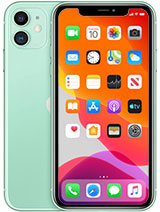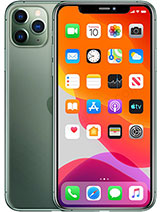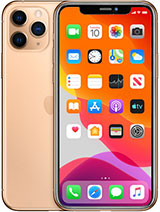Apple iPhone 11 Pro and Pro Max review By Engadget
Ever since Apple's iPhone event. Last week, I have been asking myself the same question: do these new iPhones deserve to be called the iPhone pro well on one level? Yes, because Apple made them, and they can call it whatever they want, and while I don't agree with every decision apple made here, these are still the best iPhones apple has ever made. Is that enough to warrant this new name? Maybe there are some notable improvements in these two devices which I'll dig into in a minute. In other ways, though, the upgrades' apple made to the iPhone 11 Pro and pro max are so subtle. I think it would actually take a pro to spot them before we go any further. Let's just get a couple of things out of the way, apart from their different size screens and a really clear difference in battery life, the iPhone 11 Pro and the 11 pro max are basically identical.
They use the same a13 bionic chipset. They all have the same cameras. Furthermore, they both run iOS 13. , you get where I'm going with this, if you're considering buying a pro, your real decision boils down to three things: what color you like, how much storage you need and whether you want to use a phone as big as the max all the time, because these phones have so much in common. Furthermore, they share the same design quirks that apple embraced this year, they're both a little faster than the 10s series was last year, and they both come in apple's new midnight green, which really seems to be a crown pleaser.
I do have to say it's only really green in direct light, though otherwise it just kind of looks more like a slate gray, which is honestly fine by me. These backs are made from a single piece of milk glass and most of it has this really nice matte finish. It also means they're a little less prone to sliding around on certain surfaces too. Imagine this you're about to sit down on your couch and you just sort of absentmindedly put your pro on the arm. I do this all the time and when I tried it, the tennis cluttered to the ground, while the pro stayed put your mileage is probably going to vary, but in my experience this new finish doesn't just feel good.
It's actually helpful. I wasn't too worried about the worst case scenario of dropping this thing, because the pros use what apple calls the toughest class you'll find in a smartphone and there's reason to be skeptical there. I honestly can't test that without trying to destroy phones. Furthermore, I do not own. That said, my protest units have already withstood some accidental drops.
Just keep this in mind, though tough in this case seems to mean the glass won't shatter, it's still pretty easy to scratch. So a screen protector is probably a good idea. Now. Remember when I said: you'd have to be a pro to spot. Some changes apple made here.
Well, the iPhone pro screens are one of the best examples of that apple calls. These panels, super retina, Dr displays and that kind of bombastic branding suggests. We can expect some eye-catching improvements about that. These are great screens, but they're not dramatically better than the ones. From a year ago, screen brightness tops out at around 800 nits instead of the 600, something we got in the 10s series, but the pros aren't that much more readable in broad daylight than those older phones were, if at all, actually the difference is most notable when you're watching 4k HDR video, where the brightness peaks at around 1200 nits during really bright scenes.
Even then, though, you're not going to notice the difference unless you have the new expensive phone right next to the old, expensive phone. That's not all. Remember 3d touch that pressure sensitive screen tech that apple pushed for a few years. Well, it's finally gone, and if you really miss it like, I did, which I'm in the minority on I'm sure of that you can long press on app icons to access the same shortcuts. Most people, I never know actually use it, though so losing it here makes a lot of sense.
Performance is another one of those areas where you might not see a huge difference, but that really depends on where you're coming from. If you haven't upgraded your phone in a while, the iPhone 11 Pro and pro max will feel fantastically quick thanks to apple's new a13 bionic chipset if you're coming from last year's flagship iPhone. So the difference is much more subtle. Apps launch a little faster and graphically intense games load a little quicker while multitasking feels just a touch more seamless. The a13's power might be more noticeable if you're, using certain heavy-duty apps since apple exec spent a lot of time.
On stage last week talking about video recording, I tried exporting 13 minutes of 4k 60 frames per second video in iMovie. It took 18 minutes for the pro and pro max for render that final 5.7 gig file compared to about 21 minutes on last year's 10s and 10s max that's a decent improvement, but maybe not earth shape. I'm never going to complain about improved performance, but just don't expect to be totally blown away if you've been using a recent iPhone with all that said, some of apple's changes definitely stand out. Battery life is a great example, because the a13 is more efficient, in addition to just being faster. I've generally been able to get about 12 hours of continued use out of the smaller pro instead of the 9-ish I got out of last year's 10s and the big old pro max easily ran for between 13 and 14 hours on a single charge compared to the 11 to 13 hours.
I got of last year's big iPhone if it's big changes you're after here look no further than the cameras. We've got three rear, 12 megapixel sensors in the pros, the standard, wide camera with optical image, stabilization and an f 1.8 aperture, the telephoto, with a slightly wider aperture this year and a 2x optical zoom, and the new ultra-wide camera that captures a 120 degree field of view. The best results tend to come from the standard, wide camera, which is a good thing, since it's probably the one you're going to use most often it's by far the fastest of the three to lock onto your subject, especially in low light, and it delivers. What I think is the best mix of color and detail of these three cameras. The telephoto is no slouch, though, and it's actually perfect at rendering.
Fine details, even though it's a little less capable than that wide camera in the dark. It would have been nice to see apple push this thing past the 2x optical zoom limit, but it's still a really handy tool to have whenever you need it. So what about that new ultra-wide camera? Well, it's mostly good. It struggles at times to capture evenly exposed photos in the dark and it just it doesn't pack photos with detail the same way. The standard wide camera does there's still a decent amount of it there, especially when you're shooting in bright conditions.
It's just not as much as the other cameras and that's kind of not the point. This camera is all about giving your photos more space and context. If you're worried about clarity more than anything else, you might be a little disappointed, but in my experience it is a great utility player for when you want to shoot a sweeping vista or when you just don't have much room to move. In other words, it's good enough for what it's supposed to do. They have their quirks, but by and large, these are excellent cameras, and I know some of you are probably wondering how they stack up two competitors, like the note 10 and the pixel 3.
Honestly, it's kind of hard to make definitive statements, because they all kind of have different motives. Samsung's cameras process photos to have very vivid, colors and lots of detail, so your photos almost look like an idealized version of what you actually shot. Apple's three cameras here are geared more towards capturing the world. As you see it, even if features like smart HDR, selectively, amp up the color and exposure more than they used to and Google's pixels well, they sort of land somewhere in between those approaches, though, that could change once the pixel 4 has come out. Let me put this another way.
The photos I took with the Galaxy Note: 10 are the ones I'd most like to post on Instagram with the no filter hashtag. The photos I shot with the iPhone 11 pros are the ones I'd most like to throw into Lightroom and have some fun with which phone actually takes. The best photos is a matter of preference. I think, but apple's cameras here are clever and capable enough that you won't really feel like you're missing out on anything. There are just a few other additions.
I should point out here. Quick. Take makes it easy to switch from framing up a photo to shooting a video by holding the shutter button down, there's also a high key light mono setting for the portrait mode, which snaps a black and white headshot of your subject with a bone white background. These results can be pretty impressive, just as long as you make sure no one's behind your subject. Otherwise, the camera turns them into literal ghouls that will clutter up your shot apple, also added a night mode this year, which works pretty differently compared to what you'd see on a Samsung or a Google phone.
The camera will recognize when you're shooting in the dark and automatically enable night mode. That is to say you can turn it off before you shoot, but you can't really prevent it from turning on in the first place, and the results are maybe not quite as striking as what you might get out of a pixel, but that's again, sort of by design. Other phones, night modes tend to brighten up photos too much as if they were trying to turn night into day apple's night photos are still plenty bright, but they feel like they were shot in the wee hours and whether that's a good thing is again really up to you. There is just one catch, though you can't use the night mode with that ultra-wide camera at all the 12 megapixel front, camera isn't quite as interesting as what's around back and as usual, it'll take nice selfies without a whole. Lot of fuss.
Apple did add two notable features here, though, tapping a button widens the camera's field of view, so you can squeeze a few more people into those selfies. You can now also shoot slow motion. Video which works as well as you'd, expect you're going to start seeing these slop hies everywhere and while I hate the name I figure, I should just contribute my own before everyone goes crazy, so just enjoy the shot of what happens when I eat a handful of glitter kids. Please don't try this at home. Oh, and the videos you shoot with the iPhone pros are pretty great.
Actually you can capture footage at up to 4k60 and thanks to an assist from the neural engine, the pros did a surprisingly good job at adapting to changing conditions. Exposure was more consistent throughout, and I noticed a lot less noise than I expected. So at the end of it all, should you buy an iPhone, 11 pro or pro max? Well, I think it really depends on they're all around better than the 10s series, and they're definitely a worthy upgrade if you're using an iPhone, 10 or anything older than that. These are, after all, probably the most powerful smartphones' money can buy right now, but if you don't need the best of the best or, if you're still not generally thrilled about the idea of dropping a thousand dollars on a phone, even a phone that'll last you a few years there's another way. The iPhone 11 is the more practical choice and the one that probably just makes sense for more people.
I've spent a lot of time testing these new phones. So I really appreciate you guys taking the time to watch our review. If you have any feedback or if you have any further questions, you want us to try and dig into as we continue covering these devices. Definitely let us know and be sure to subscribe.
Source : Engadget



























